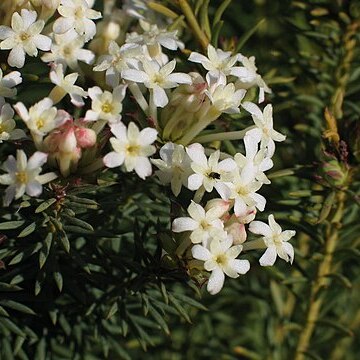Calyx tube cylindric, glabrous or pubescent, usually articulated above ovary, upper and lower parts often with indumentum differences, the upper part falling off after flowering; lobes imbricate, always shorter than the tube, erect, spreading or reflexed, coloured.
Stamens 4, 8 or 10 in 1 or 2 whorls, those of the upper opposite the calyx lobes, exserted or enclosed in the throat of the calyx tube, very rarely aborted; anthers sessile or with very short filaments, sometimes heteromorphic.
Flowers bisexual, very rarely unisexual, 4–5-merous, sessile or pedicelled in spicate inflorescences or ebracteate few-flowered fascicles or bracteolate few to many-flowered terminal or axillary heads, rarely compound.
Ovary sessile or shortly stipitate, 1-locular, glabrous or pubescent; disk membranous, cup-shaped or lobed, sometimes minute or lacking; style filiform, lateral; stigma capitate or club-shaped, papillate.
Petals 4, 8 or 10, alternating with the calyx lobes, entire or more or less deeply divided, membranous or fleshy, often scaly or glandular, sometimes missing.
Bracts present, usually persistent, sometimes leaf-like, rarely missing.
Fruit dry, small, enclosed by the persistent base of the calyx tube.
Perennial herbs, shrublets or shrubs, often ericoid, or trees.
Leaves alternate, rarely opposite, membranous or coriaceous.
Bark smooth or rough, with or without lenticels.
Seed with scanty or no endosperm.
